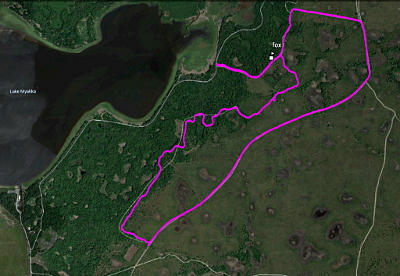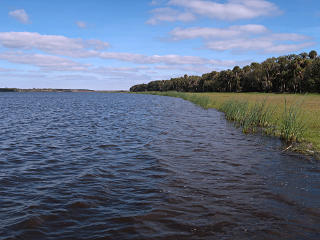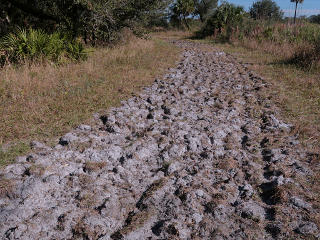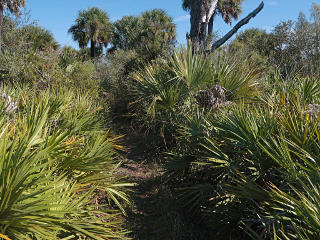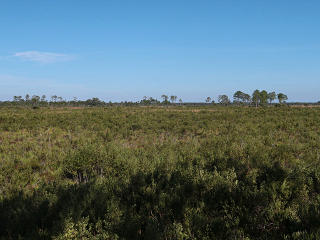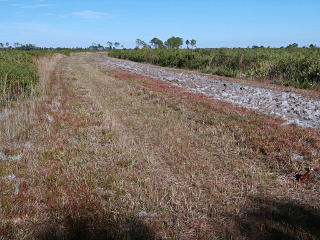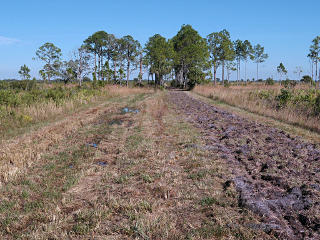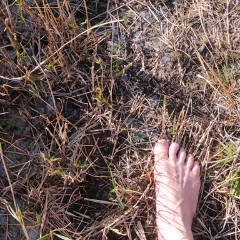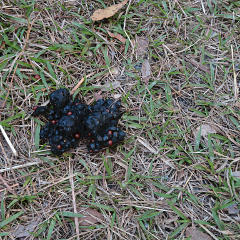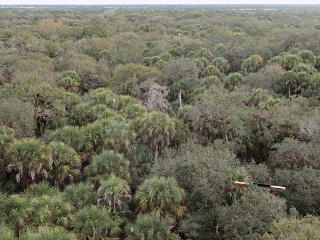| |
A Florida gulf-coast area visit gave me an opportunity to go poke around the
Myakka River State Park.
I had been there a few years before and did the "touristy" stuff, like the
boat tours on the lake to gawk at alligators, but this time I just wanted
to go hike around its trails some.
The park is *huge* and its trails go for long stretches between intersections,
and it's not easy to plan a loop that isn't going to take all day.
I made a guess at a route that would take me through some "wooded" areas
and open fields.
[In Florida-speak, those are respectively called "hammock" and
"prairie".]
In aerial views it's pretty easy to see where these regions are.
Here's the GPS track from the day, about 6.5 miles.
This view is about two and a half miles wide, showing that the density
of trails here is fairly sparse, and this is only a small fraction of
the park!
I was aiming for something called "hiking trail", one of the more wiggly
lines on the map, which is a metric I often use as indicating the
interesting trails.
I wanted to make a loop, so the return from that would be up one of the
larger access roads.
|
